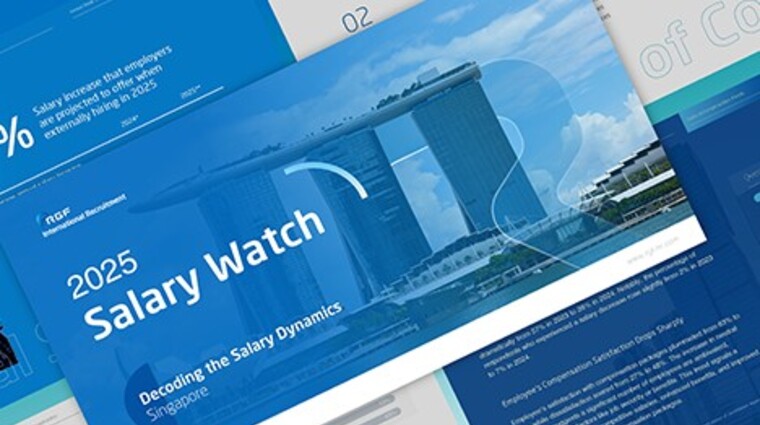Your company culture is a big deal because it signals to both internal and external parties the distinguishing qualities, values and belief system of your organisation. For instance, what are your perceptions of companies like Google and Apple based on what you’ve learnt about their company culture: Are they a good employer? Would you consider them the foremost leaders of their industry? Are their products/services highly regarded by consumers?
Company culture encompasses everything that the organisation does and everybody in it, and is essentially a system made up of various components, including goals, processes and incentives, that are designed to optimise operational effectiveness.
James Miles, Managing Director of RGF Executive Search Singapore, gives his take on its importance: “Company culture influences everything and everyone. A well-developed company culture brings positive changes across the organisation and is becoming increasingly important in the modern workplace, which is continually evolving.
A strong and positive company culture can impact key areas such as retention and talent attraction. When you create a great workplace that allows your employees to satisfy their needs and gives them a true sense of ownership, they won’t want to leave.”
He also highlights the critical role of company culture in attracting the millennials who are driving industry growth, as this cohort of workers seek much more than just financial rewards from their employers.
Cultivating a positive company culture requires conscious thought, planning and effort. The question is: Should you take a top-down or bottom-up approach towards establishing a winning work culture within your organisation?
THE TOP-DOWN APPROACH
This approach still forms the basis of corporate culture in most organisations. Generally, it is an autocratic style of leadership whereby upper management issues directives which employees are expected to follow.
The mission and core values of the organisation are defined and set by the top management team. A cascade of instructions is then passed down to employees, who are assigned to accomplish the goals on their own or in collaboration with their colleagues. Some lower-level managers may have input into how to accomplish the end goal, but they may not have much authority to change policies without approval from the highest level of management.
THE BENEFITS:
- As they are perched at the top of the hierarchy, top-ranking executives enjoy a bird’s eye view of all the organisational components. This gives them a clearer and broader perspective when they are establishing the company’s vision, setting goals and driving expectations.
- Autocratic leadership is especially beneficial to organisations with talented, knowledgeable and/or charismatic top executives with strong leadership skills. They will be able to give clear directives to managers, allowing them to quickly and effectively take charge, assign tasks to teams or employees, and establish deadlines.
- Top-down decisions and directives are often successful when they are made with much thought and care. This means all aspects of their impact and implications on employees and business performance are well considered before implementation.
THE DRAWBACKS:
- Having dictatorial or weak leaders at the top could spell problems for the organisation and harm its overall performance.
- Employees led by a dictatorial leader may grow resentful or lose the motivation to perform better if they feel they have no voice at all, aren’t allowed to use their own initiative in carrying out tasks, or are being closely monitored all the time.
- A weak leader may find employees challenging unilateral decisions that are unpopular with them. Autocratic leadership would therefore negatively impact organisations that are struggling to implement changes effectively.
- A top-down management system impedes the flow of innovative and creative ideas from employees who aren’t at the top of the hierarchy, and therefore stifles organisational development and growth.
THE BOTTOM-UP APPROACH
This approach allows employees to participate in every step of the process towards reaching a goal. It focuses on a system of processes and practices, and allows informal ways of working, identifying challenges and overcoming obstacles.
THE BENEFITS:
- A top-down management system may not be as effective in situations where high levels of expertise or creativity are essential. There may be a bigger pool of brainpower among employees to draw upon, and a bottom-up approach would allow the talents of lower-level employees to be harnessed. These employees could even share their skills or knowledge with their colleagues, and thereby enhance overall productivity and performance.
- A bottom-up management system allows employees of all levels to be involved in the processes of goal setting and project development. Allowing them to exercise own initiative and reach milestones through ways that work best for them will give them a strong sense of ownership and belonging, encourage them to take greater pride in their work, make them feel their contributions are valued, and motivate them to strive harder to succeed. The end results: higher morale and productivity.
Organisational changes need to come from the grassroots. More companies are embracing the bottom-up management approach, which relies on feedback from lower-level employees who may have unique insights into common problems and the best possible solutions for them, as well as ways to improve processes.
In the real world, you’ll find that many of the elements hindering employees are beyond their control. In such cases, the only thing they can do is to escalate any problem to the people who can actually make the decision and get management support to fix things.
THE DRAWBACKS:
- There are possible pitfalls when employees are allowed across the board to engage in decision-making. Their involvement in the process could bog employees down over time-consuming meetings and encourage a proliferation of unproven ideas, which leads to even more time being spent on debating their viability. Too much input could also lead to reduced clarity in the direction to take, making it more difficult for managers to effectively realise their goals.
- In a highly competitive environment, employees or teams may do their utmost to outshine each other instead of working harmoniously to achieve common goals, causing divisions or even conflicts between one another and a negative effect on productivity.
CONCLUSION
Whichever approach your company is leaning towards, bear in mind that the culture you establish will permeate throughout the entire organisation and define the overarching spirit of your workplace, and is a culmination of your company’s mission, core values and performance.
RGF Executive Search can provide you with insights about Asia Job Market and can get you access to its best talents.
Contact Us
In this article:

RGF Executive Search Singapore





















